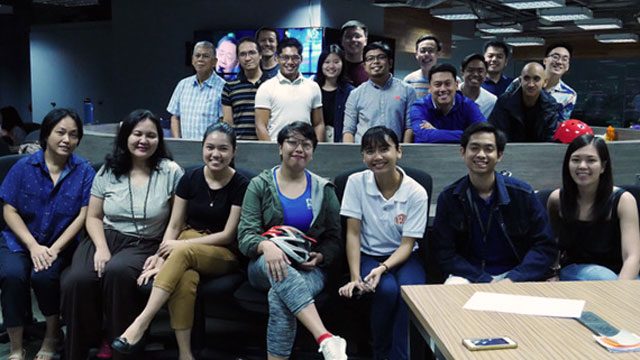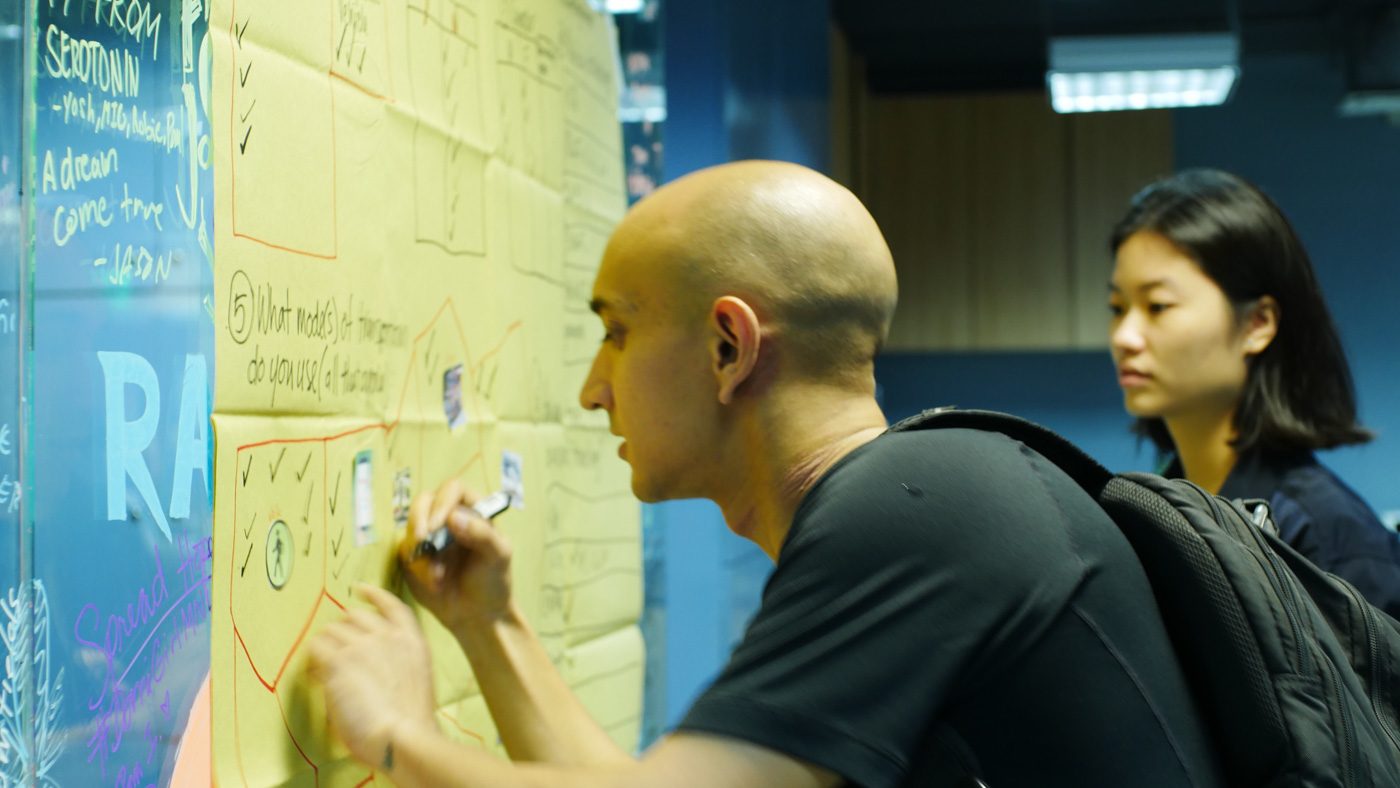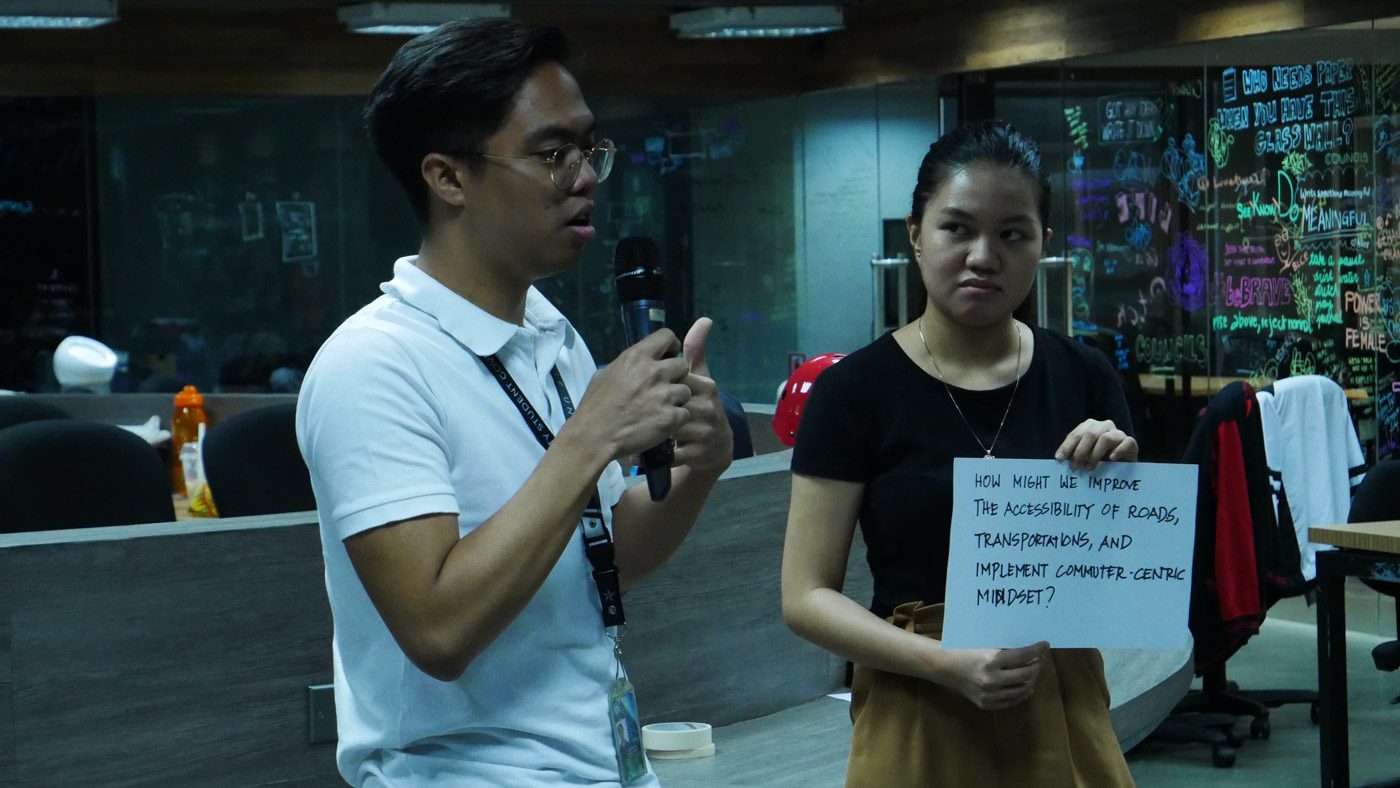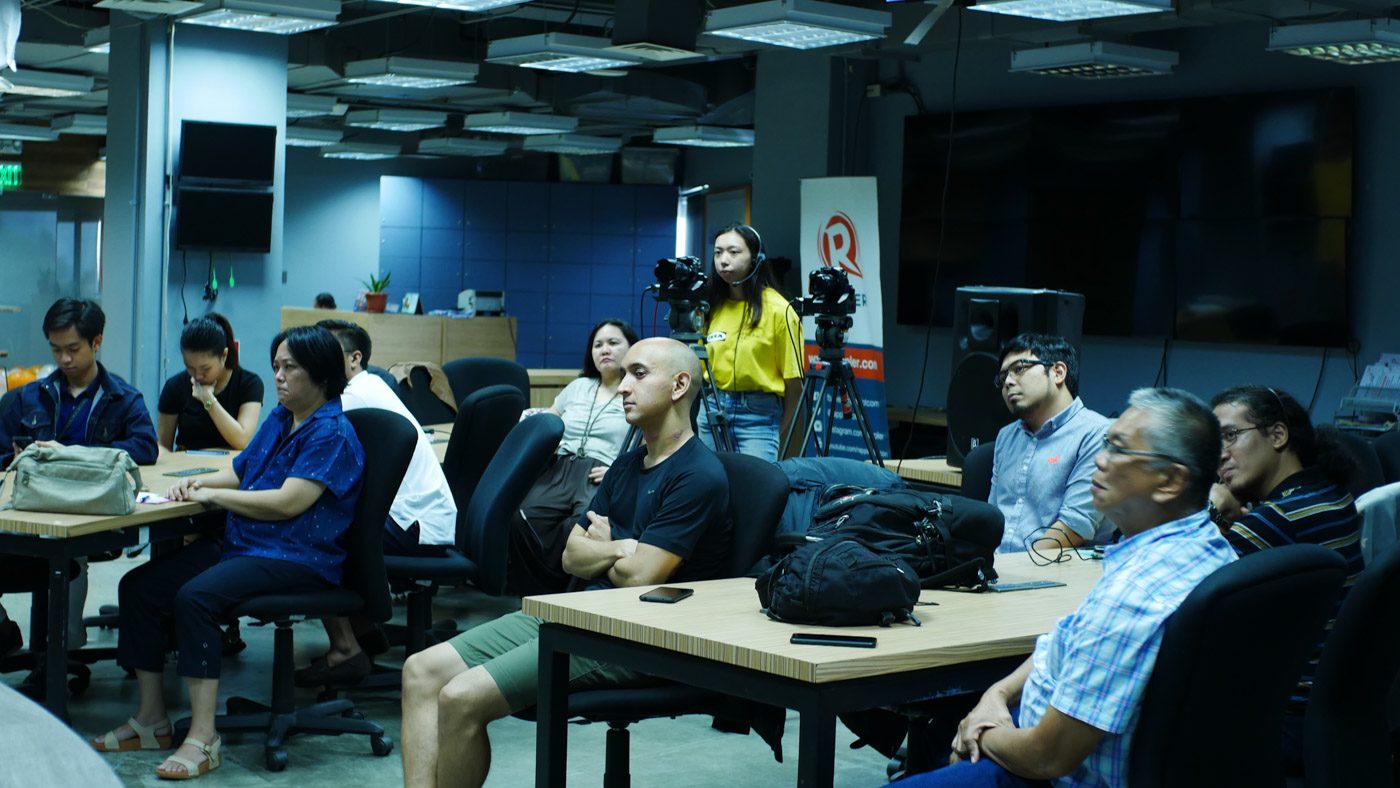SUMMARY
This is AI generated summarization, which may have errors. For context, always refer to the full article.

MANILA, Philippines – With #CommutersNaman at the spotlight, around 15 participants joined the “Move Huddle: How do commuters reimagine EDSA?” on Saturday, August 31 to discuss possible solutions following the crisis on public transportation.
The huddle was organized by MovePH, the civic engagement arm of Rappler, in partnership with transport advocacy group AltMobility and Right of Way.
Discussing ideas on how to make Metro Manila liveable, Ira Cruz of AltMobility emphasized the importance of involving commuters and their interest when crafting policies that would help address the pressing problem on transportation.
“For us to be able to build better cities for ourselves, we all need to pitch in,” Cruz said, stressing that the solution should not just be restricted to transportation experts but should be considered as a shared responsibility of the community. (READ: After MMDA’s faulty policy, netizens suggest ‘solutions’ to Metro Manila traffic)
“This is where we really need to focus all our efforts. This is why as a group, we’ve decided to put what we know as experts, and urban transport practitioners into solving this issue…We’re all professional commuters, we’re all professional pedestrians, bikers. We know what we need but we can’t do it alone,” Cruz added.
Cruz also mentioned that 80% of road users are commuters while only 20% of the road space is allocated for the 80% of commuters. For him, prioritizing cars reduces mobility and lowers the quality of public transportation as observed nowadays.
“There is a failure in the system. Cars occupy 80% of the road space but move only 20% of the population. We’re not focusing on the ones who really need it the most,” Cruz emphasized citing the need to address people’s car-centric point of view.
How’s your commute?
Participants of the huddle echoed Cruz’s claim by describing their experience as a commuter in Metro Manila.
“Terrible! it’s human rights violation, it’s a disservice to people. It’s hell. It’s a health hazard,” Regina Dy Seng expressed as she recalled the congestion in buses and trains that exposed commuters to harm.
Polytechnic University of the Philippines (PUP) student Rob Julian Maghinang lamented that the time he spends to endure traffic could have been used to do other productive things instead.
“I could’ve used that to review my subjects, prepare for an exam, read more books yet I’m there sitting, staring at nowhere, waiting for the bus to move. And I’m just wasting my time. It makes me dizzy to be reading while the bus is moving,” Maghinang said.

He also criticized the MMDA policy on the provincial bus ban that puts the commuters from the provinces at a disadvantage more than anyone else.
“What frustrates me is not just the traffic but how the government tackles or approach this issue. It lacks common sense,” he added.
On August 7, the Metropolitan Manila Development Authority (MMDA) implemented the yellow lane policy to which netizens criticized this policy as “anti-poor” after a photo – showing the bus gridlock barely moving in stark contrast to the lane for private vehicles which was almost empty, gained traction online.
Recently, MMDA said it would study the feasibility of a proposal to make EDSA a one-way road. On the other hand, lawmakers have been making various proposals to decongest EDSA, from bike lanes and elevated walkways to parking bans.
How might we?
The activity went beyond mere description of what the commuters’ frustrations on traffic were.
Through the huddle, the issues faced by commuters were identified and clustered. Most of the issues are anchored on awareness, behavior change, government policy and commuters’ participation.
Participants of the huddle were grouped into these 4 clustered problems and asked to craft a question of ‘how might we?’ that would help them brainstorm ideas to solve the problem.

To raise awareness on alternative mobility, one group proposed using social media as a tool and connecting with the stakeholders, especially the students, local government units (LGUs) and other government officials. Through this network, an efficient mode of transportation and mobility can be promoted.
Vince Lazatin of Right of Way also suggested the use of an app that would allow commuters to rate their commuting experience.
“You are in a bus or jeep, you take down the license plate, the vehicle or ID number of particular vehicles. And then you rate it, you say it’s clean or dirty. Bus driver is good, inconsiderate. Whatever. We need to collect data about how the commutes are because once we have this data, we can use it for policy reform,” Lazatin expressed.
Meanwhile, seeing the need to institutionalize commuter acceptability in feasibility studies, another group pitched that companies should shift their corporate service responsibilities towards commuters.
“What they can do is to adopt that one train and rehabilitate with the premise that they could put all their advertistments saying hey, we rebuilt this for you, we are moving you through our initiatives,” Julius Dalay of Commuters of the Philippines said.
That way, more people and companies will be inspired to take up the challenge and adopt more trains to rehabilitate.
Another idea that the other group presented focused on tactical urbanism as a way to encourage commuters and advocates to initiate low-cost changes in the cities to improve mobility.
“So, what we were thinking of doing includes painting speed limit on the road, putting bike infrastructure to indicate that there’s bike lane there, putting signages as simple as that. Because we do not have these things,” Keisha Mayuga of University of the Philippines (UP) Bike shared, expressing how the tactic is both scalable and replicable.
She also urged the audience to start a movement instead of just ranting about the traffic condition online.
“We have many people online, organize them and put up specific projects. Do actual things, guys. Let’s do actual things. Tactical urbanism. Let’s not just complain forever,” Mayuga reiterated.
Meanwhile, to improve the accessibility of roads, transportation, and implementation of a commuter-centric mindset, one group suggested a general inspection of buses and its terminals because many of which are unhygienic and disorganized.
“We like to further inspect it to certain LGUs and through that, we can take the necessary precautions and steps on how to further clean buses and organizations,” Angelo Lumbao of DLSU said.
Lumbao’s group also suggested of hiring a third party organization to help clean the buses and its terminals and add facilities, such as stations for breastfeeding and areas for persons with disability.

“Through these steps we could slowly change the mindset of Filipinos to take buses and encourage them with the clean and organized terminals. People will start to gather and start to commute,” Lumbao stressed.
Actual projects
With all these ideas in mind, MovePH’s unit head Raisa Serafica urged the participants to flesh out these plans into actual projects such as initiating a campaign or organizing the training of trainers to start creating ripples of change in their own communities.
Karol Abadines of Disgrunted Young People (DYP) echoed this, challenging the participants to continue creating the space where people actually meet and come up with actual projects.
AltMobility’s online initiative through its facebook group ‘How’s your byahe, bes?’ serves as a platform for discussion, brainstorming and strategizing on how to improve mobility and traffic in the country.
But for Cruz, it is also important to start building a community of people that would regularly dicuss actionable points leading to movements.
“We really want to move beyond with just coming up with ideas but to actually be able to follow through,” Cruz said. – Rappler.com
Add a comment
How does this make you feel?
There are no comments yet. Add your comment to start the conversation.